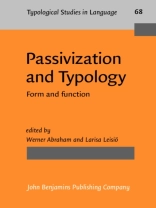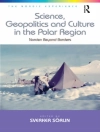Is the passive a unified universal phenomenon? The claim derived from this volume is that the passive, if not universal, has become unified according to function. Language as a means of communication needs the passive, or passive-like constructions, and sooner or later develops them based on other voices (impersonal active, middle, reflexive), specific semantic meanings such as adversativity, or tense-aspect categories (stative, perfect, preterit). Certain contributors review the passives in various languages and language groups, including languages rarely discussed. Another group of contributors takes a novel theoretical approach toward passivization within a broad typological perspective. Among the languages discussed are Vedic, Irish, Mandarin Chinese, Thai, Lithuanian, Mordvin, and Nganasan, next to almost all European languages. Various theoretical frameworks such as Optimality Theory, Modern Structuralist Approaches, Role and Reference Grammar, Cognitive Semantics, Distributed Morphology, and Case Grammar have been applied by the different authors.
Leisio Larisa Leisio & Abraham Werner Abraham
Passivization and Typology [PDF ebook]
Form and function
Passivization and Typology [PDF ebook]
Form and function
Köp den här e-boken och få 1 till GRATIS!
Språk Engelska ● Formatera PDF ● Sidor 566 ● ISBN 9789027293251 ● Redaktör Leisio Larisa Leisio & Abraham Werner Abraham ● Utgivare John Benjamins Publishing Company ● Publicerad 2006 ● Nedladdningsbara 3 gånger ● Valuta EUR ● ID 4233111 ● Kopieringsskydd Adobe DRM
Kräver en DRM-kapabel e-läsare












